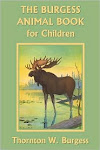 After that, they drew playgrounds for their sorting bears to play on, and after long stories of their adventures, we would solve a problem, "Three green teddies went on the swings and two red teddies went down the slide. How many teddies were on the playground?"
After that, they drew playgrounds for their sorting bears to play on, and after long stories of their adventures, we would solve a problem, "Three green teddies went on the swings and two red teddies went down the slide. How many teddies were on the playground?"Dr. Ruth Beechick stresses that it is important to respect that young children use the manipulative mode of thinking. She claims that with real objects, 3 yr olds can do problems which are normally introduced in 2nd or 3rd grade, in textbooks without those manipulatives. However, so much of math failure is because we, as young children, have not been taught in the manipulative mode. It is the basis for all arithmetic thinking. And while we, as adults, can switch back and forth easily from the various modes, very young children can not switch. When the very young children become proficient with their manipulative mode of thinking, as young children, they will begin to dispense with their use and move into the mental image mode and picture the manipulatives in their heads. The final stage is the abstract mode where they can think about a number in abstraction (rather than picturing four glass gems or four beans - they understand the number "four"). Too often they are expected to think in all three modes before they are really ready and problems, like math phoebia, result.
This all makes sense in the support of allowing our children to have a 'real' childhood, which now has become an 'old-fashioned' one before early academics and video/tv takeover. Our kids need a life full of exploration and play. So often kids in traditional schools are rushed passed these natural stages and then often are turned off to the conveyor belt learning and they struggle as a result. In play, children naturally manipulate and master that mode of thinking while learning through their hands.
 One of my little learners is very tactile and, like her daddy, likes to do more than one thing when absorbing. Our super-puzzle girl loves her numbers and she loves to organize and sort. I had written down numbers on index cards from 0-20 and mixed them up. "C" would pull a number and tell me what it was and then run and give it to Super puzzle girl, who would put them in order. We then switched...
One of my little learners is very tactile and, like her daddy, likes to do more than one thing when absorbing. Our super-puzzle girl loves her numbers and she loves to organize and sort. I had written down numbers on index cards from 0-20 and mixed them up. "C" would pull a number and tell me what it was and then run and give it to Super puzzle girl, who would put them in order. We then switched...

Tahhh....dahhhh...we then went upstairs and decided we needed to clean up our stuffed animal bins. So the girls took them out and sorted them by species - got a little math and science, and a cleaned up play room to boot :)
They love playing games that involve challenges and early learning, though I am totally on board with the benefits of delaying formal academics until the child is developmentally ready and presenting the learning in a fun, hands-on way. So many of us who homeschool place a high value on protecting that inborn love of learning. Children are in search of understanding and will teach themselves. Mine love it when I tell them that they just did their math and science for the day and they had so much fun doing it that they want to do more! Much more fun to sort stuffeds than to look at a worksheet and draw a line between which baby animal goes with the momma animal :) Gotta keep that passion for learning ablaze!
"Education is not the filling of a pail but the lighting of a fire."
~ William Butler Yeats






























No comments:
Post a Comment